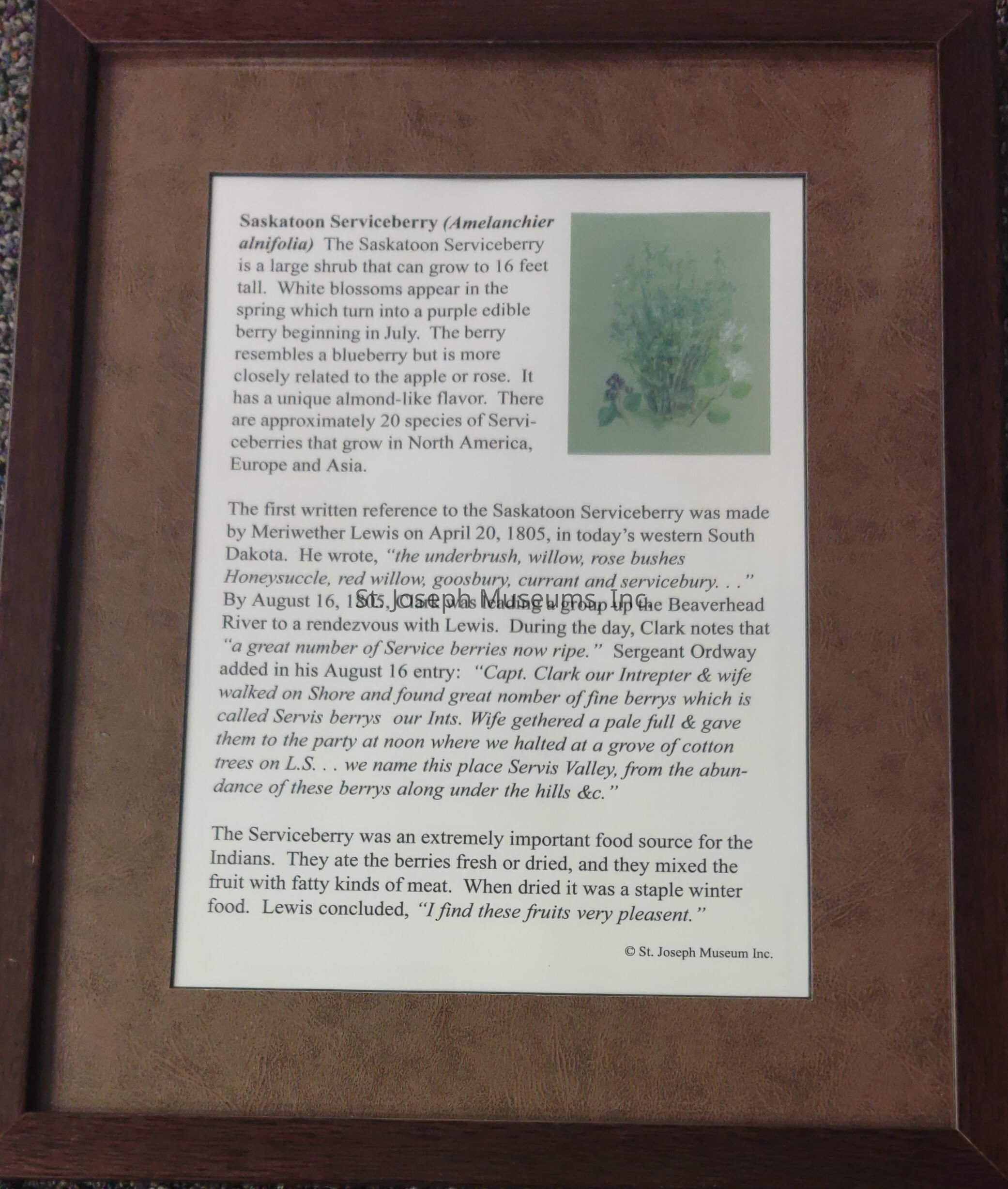Name/Title
Saskatoon Serviceberry (Amelanchier alnifolia)Entry/Object ID
2021.1.33 BScope and Content
Saskatoon Serviceberry (Amelanchier alnifolia) plant description, framed.
The Saskatoon serviceberry is a large shrub that can grow to 16 feet tall. White blossoms appear in the spring which turn into a purple edible berry beginning of July. the berry resembles a blueberry but is more closely related to the apple or rose. It has a unique almond-like flavor. there are approximately 20 species of Serviceberries that grow in North America, Europe and Asia.
The first written reference to the Saskatoon Serviceberry was made by Meriwether Lewis on April 20, 1805, in today's western South Dakota. He wrote, "the underbrush, willow, rose bushes Honeysuccle, red willow, goosbury, currant and servicebury..."
By August 16,1805, Clark was leading a group up the Beaverhead River to a rendezvous with Lewis. During the day, Clark notes that "a great number of Service berrys our Ints. Wife gethered a pale full & gave them to the party at noon where we halted at a grove of cotton trees on L.S... we name this place Servis Valley, from the abundance of these berrys along under the hills &c."
The Serviceberry was an extremely important food source for the Indians. They ate the berries fresh or dried, and they mixed the fruit with fatty kinds of meat. When dried it was a staple winter food. Lewis concluded, "I find these fruits very pleasent."Context
Originally designed by the St. Joseph Museum in the fall of 2004. Titled "Botanical Wonders of the Uncharted West. The Recorded Flora of the Lewis & Clark Expedition."Collection
Lewis and ClarkLexicon
LOC Thesaurus for Graphic Materials
Botanical drawings, Expeditions & surveysArchive Items Details
Title
Saskatoon Serviceberry (Amelanchier alnifolia)Creator
Mary L. FletcherDate(s) of Creation
2004Subjects
Plants, Watercolor paintingsParts
Count
2Parts
Watercolor of plant and descriptive label, both framed.Condition
Overall Condition
Very GoodProvenance
Notes
"Botanical Wonders of the Uncharted West" visually depicts how well Lewis followed Jefferson's instructions. In recognition of this achievement, The S. Joseph Museums, Inc. commissioned accomplished artist Mary Fletcher to create fifty (50) selected paintings of flora documented by the Corps during their Journey. These framed watercolor originals are accompanied by similarly framed labels, generated by former Head of Research Jackie Lewin, which describe the corresponding plants with appropriate quotations from the Journals. This collection makes available for study and appreciation plants that were new to Lewis and Clark, but which Native Peoples already recognized as valuable sources of food, medicine, and tools. Some of these still remain a mystery to many, but all will enjoy their beauty, their diverse uses, and their accomplished renderings.
